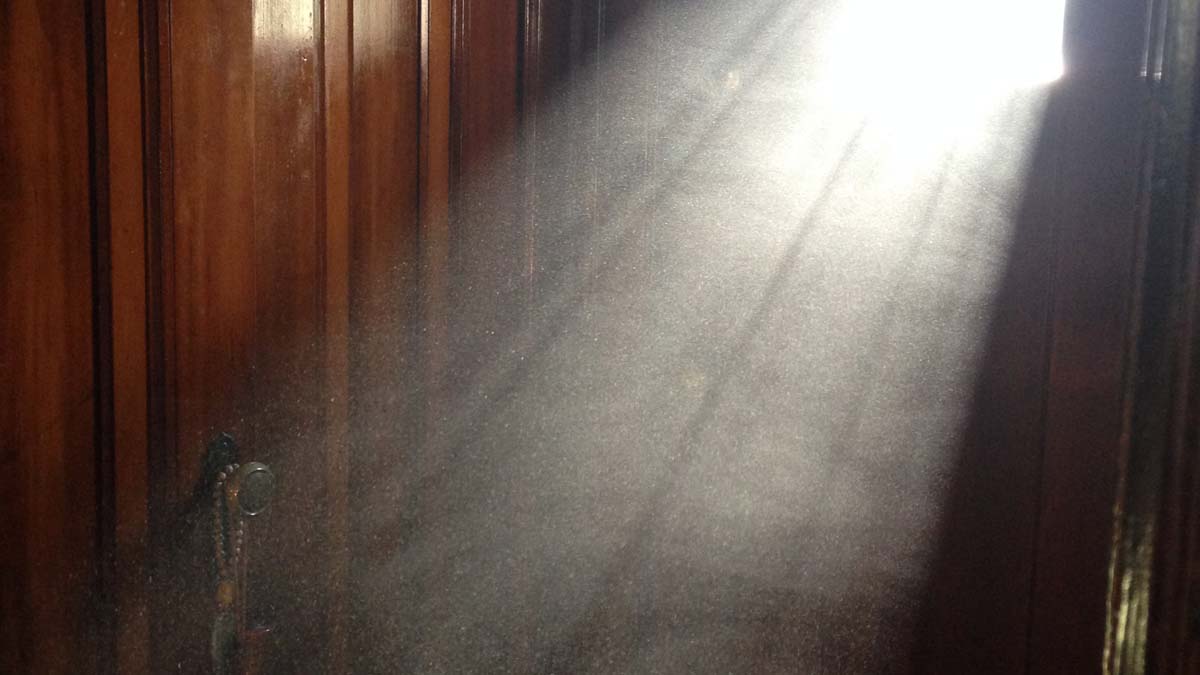House dust is a common problem in our homes, which settles on surfaces, floats in the air, and can even cause allergies. This dust is a combination of small particles from various sources, making it a complex and common aspect of indoor environments. It’s essential to keep the air quality indoors safe and comfortable, which requires constant attention.
The Composition of House Dust
House dust is not a single substance but rather a combination of diverse materials. It typically includes:
- Dead Skin Cells
A significant component of house dust is composed of dead skin cells that humans and pets shed naturally.
- Dust Mites and Their Waste
Dust mites are microscopic creatures that survive in warm, humid environments by eating dead skin cells. Dust accumulates due to their waste, which contains proteins and enzymes.
- Pollen and Plant Material
Pollen grains from plants and other organic materials from the outdoors can find their way inside and contribute to house dust.
- Pet Dander
If you have pets, their dander (tiny particles of skin and hair) will also become part of the house dust.
- Insect Waste and Body Parts
Insect residues, including tiny body parts, can contribute to the dust in your home.
- Indoor and Outdoor Particulate Matter
House dust can also contain fine particles from the outdoors, such as soil, pollutants, and even microplastics.
Areas where dust accumulates in your home
- Bedroom
The bedroom tends to accumulate the most dirt in your home due to factors like human hair, oil, and lint that easily gather in the bed. The warm and humid environment also attracts ticks.
- Between Furniture
Dust often accumulates in places between walls and furniture that are not moved often, such as sofas, refrigerators, and cabinets.
- Bathroom
Damp and cramped places in the bathroom create a conducive environment for mold growth. Additionally, household dust tends to collect around sinks where hair and dandruff are present.
- Floors
Human movement and wind release household dust into the air, which eventually settles on the floor over time. Carpets, in particular, easily trap moisture.
- Blinds
Blinds with slats tend to accumulate dust, so make sure to wipe between each slat regularly to keep them clean and dust-free.
- Electronics
Electronic devices such as computers, televisions, and video game consoles tend to accumulate dust.
- Ceiling Fans and Lighting Fixtures
Dust particles in the air settle on various surfaces, including ceiling fans and lighting fixtures.
- Tops of Doors, Windows, and Cabinets
Though often overlooked, the higher surfaces like the tops of doors, windows, and cabinets can accumulate a surprising amount of dust.
- Upholstery
Upholstery, curtains, and bedding can harbor dust mites, pet dander, and dead skin.
- Baseboards and Carpeting
Dirt and pollen from outside can be tracked indoors and settle on baseboards and carpets.
Managing House Dust
While it’s not possible to completely eradicate house dust, there are steps that can greatly reduce its presence and its negative effects on indoor air quality and health.
- Regular cleaning
Frequent dusting or vacuuming with a vacuum equipped with a HEPA (High Efficiency Particulate Air) filter will remove dust from surfaces and air.
- Wash Bedding and Curtains
Wash bedding, curtains, and other washable fabrics regularly in hot water to eliminate dust mites and allergens.
- Use Allergen-Proof Covers
Encase mattresses, pillows, and box springs in allergen-proof covers to create a barrier against dust mites.
- Maintain Ideal Humidity
Keep indoor humidity levels between 30% to 50% to deter dust mite growth.
- Reduce Clutter
Minimize clutter in your home, as it provides fewer hiding places for dust.
- Keep Pets Groomed
Regularly groom and bathe pets to reduce the amount of pet dander in the house.
- Ventilate Your Home
Proper ventilation can help reduce indoor air pollutants, including dust particles.
- Consider Air Purifiers
High-quality air purifiers with HEPA filters can further improve indoor air quality by capturing airborne dust particles.
Keep your windows closed on high pollen days.
Conclusion
House dust is an inevitable part of our indoor environments, but its impact on our health and comfort can be managed effectively. Regular cleaning, controlling indoor humidity, and minimizing potential sources of dust can significantly reduce allergens and improve indoor air quality. By implementing these proactive measures, we can create a healthier and more comfortable environment for ourselves, our loved ones, and even our pets. This can greatly improve our overall well-being and create a more enjoyable home life experience.
FAQs
Can house dust cause serious health problems?
House dust is generally harmless, but it can trigger allergies and worsen respiratory symptoms in individuals with sensitivities.
Are dust mites visible to the naked eye?
No, dust mites are microscopic and cannot be seen without magnification.
Can air purifiers completely eliminate dust from the air?
While air purifiers with HEPA filters can significantly reduce airborne dust particles, it is challenging to eliminate dust entirely.
How often should I vacuum to control dust?
It is recommended to vacuum high-traffic areas at least once or twice a week to effectively control the levels of dust.
What is the best way to remove dust from electronics and delicate items?
Use a microfiber cloth or an anti-static dusting brush to gently remove dust from electronics and delicate objects.
Also Read
Why Is There So Much Dust In The Winter Season?
Industrial Dust: Understanding its Impact and Management

13 thoughts on “What is House Dust and How to Manage It?”